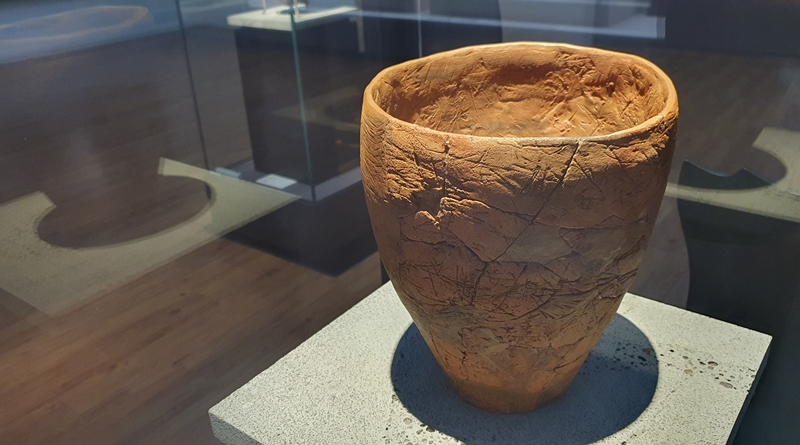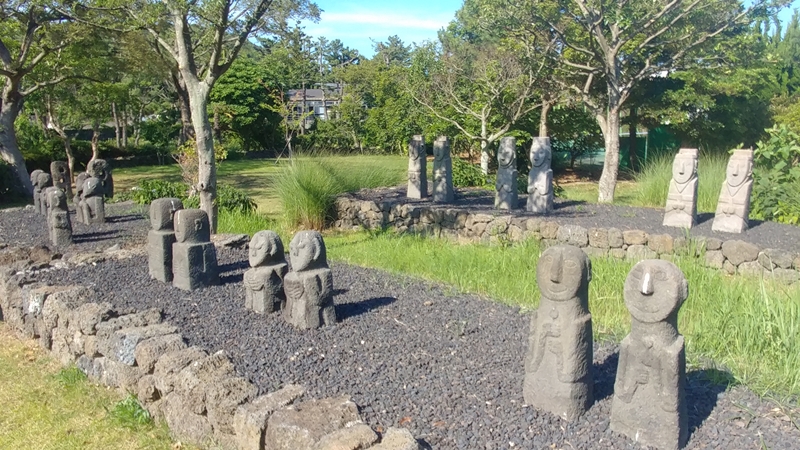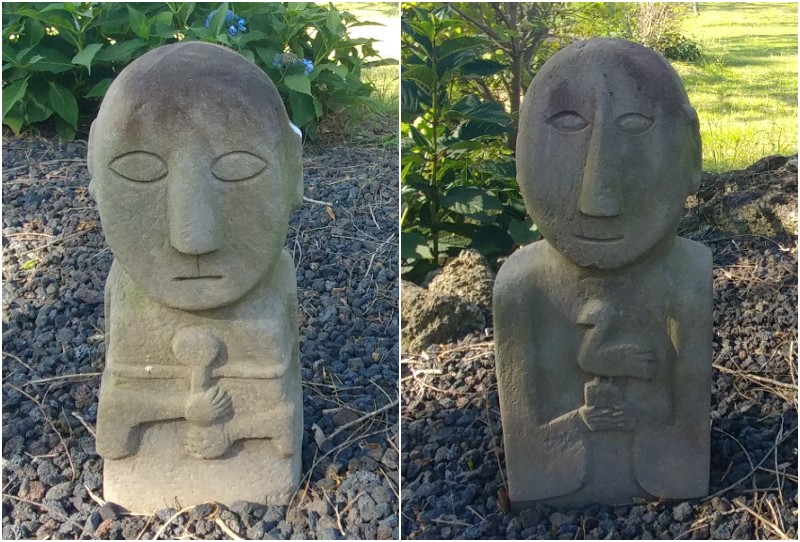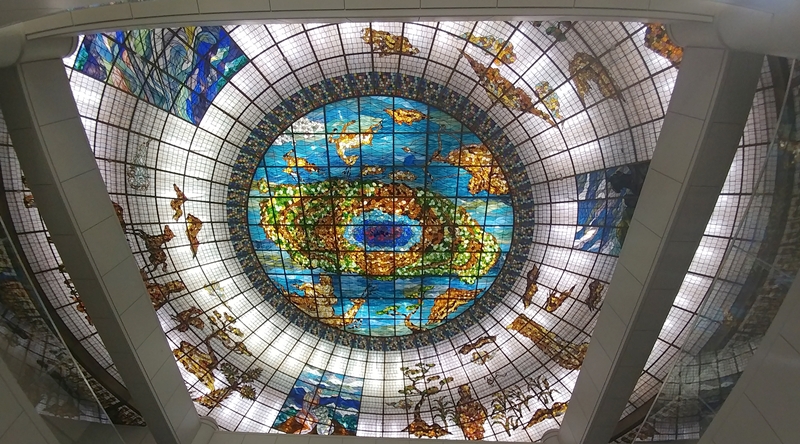By Lee Kyoung Mi
Photos = Lee Kyoung Mi
Since ancient times, water has been a precious resource on Jeju Island since the volcanic island has no rivers. This explains the formation of villages along the coasts, where yongcheonsu (spring water) ensured life for residents.
Yongcheonsu is groundwater that surges to the earth's surface through crevices in rocks or formations.

Gosan-ri type pottery, the country's oldest earthenware, was excavated in the remains of the village of Gosan-ri on Jeju Island.
Of these villages, the largest was the present Gosan-ri area in the township of Hangyeong-myeon in Jeju City. Among remains from the Early Neolithic era discovered here, Gosan-ri type pottery has gained the most attention.
Believed to date back to around 8,000 B.C. as the nation's oldest pottery from the Early Neolithic Era, the relic predates comb pattern pottery discovered on the Korean Peninsula by over 2,000 years.
"What makes this earthenware different from those in other regions is traces of plant leaves or stems stuck to the surface appearing as unique designs," said Lee Jaeho, assistant curator at Jeju National Museum. "That Korea's oldest Early Neolithic pottery was made on Jeju Island is highly symbolic."

Dongjaseok (statues of children) installed in front of graves on Jeju Island are mostly made of volcanic rocks such as basalt or andesite. The simple facial features on the round face give off a warm feeling, and the head is either shaved or shows a braid.
The museum's outdoor garden is full of green trees and grass and colorful plants indigenous to the island. On one side are dozens of small stone statues of children called dongjaseok of varying sizes and shapes.
Since ancient times, such statues have been put up in front of graves.
"Dongjaseok is said to protect a grave and console the soul of the dead," Lee said. "It means an innocent child carries the soul of the dead and runs the latter's errands."

Lee Jaeho, assistant curator at Jeju National Museum, said, "What a dongjaseok carries in its hands is the mind of the living," adding that the living put an item in a statue's hands to ensure care of the dead on the former's behalf.
A statue's hands gathered politely in front of its chest hold items such as spoons, fans, flowers and alcohol bottles. This showed the favorite things of the dead while they were alive or the wish for their souls to rest in peace.
Rice paddles and spoons were said to reflect the wish of the dead not to starve even in the afterlife. Fans were believed to cool off from the heat and ward off bugs.
# Tips to enjoy Jeju National Museum
- Enter the museum, stand in the middle of the central hall at the entrance and look up at the ceiling. The stained glass represents the Myth of Samseong on the founding of Tamna, the island's former name, and the three symbols of Jeju: stones, wind and women.

The Myth of Samseong on the three founders of Tamna (Jeju Island's former name) with the surnames Go, Yang and Bu and the three common factors of the island -- rocks, wind and women -- are shown on the stained glass of the ceiling at the museum's central hall.
The museum is a 20-minute drive from Jeju International Airport. Because of its proximity to the airport, a visit to the museum should either start or end a trip to the island. Everyone is "honjeoopseoye," or "welcome" in Jeju dialect, at Jeju National Museum.
km137426@korea.kr
![[Must-sees at Korean museums] ⑤ Jinju Nat'l Museum](/upload/content/image/dccd5f353bed4509bd952bea98149ecd_20240517093727.jpg)
![[Must-sees at Korean museums] ④ Buyeo Nat'l Museum](/upload/content/image/49249826d45a4c1e9e5f2dbd370962cb_20240418151235.png)
![[Must-sees at Korean museums] ③ Gwangju Nat'l Museum](/upload/content/image/a930dfb35b144d6abdfb4483adcc7bf4_20240314090859.jpg)
![[Must-sees at Korean museums] ② Gyeongju Nat'l Museum](/upload/content/image/9a4d39e2842348aca36c10d73fb90f0a_20240216114311.jpg)
![[Must-sees at Korean museums] ① National Museum of Korea (II)](/upload/content/image/1c4dec52513347a98b9c43c9fd62551e_20240118131624.jpg)
![[Must-sees at Korean museums] ① National Museum of Korea (I)](/upload/content/image/a39a36cb636e4c02aae1ab053f63fe57_20240112112911.jpg)